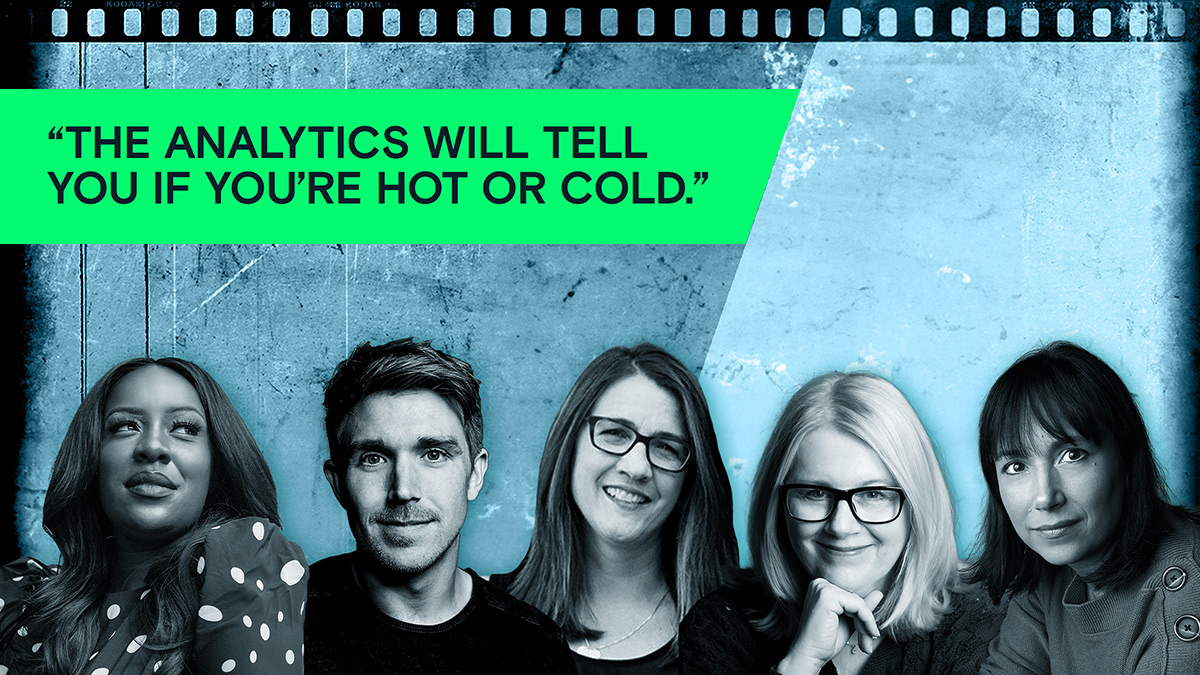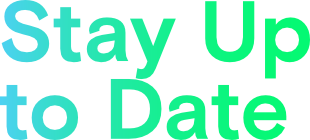In one of our most recent Simian Heads of Production roundtables, agency HoPs spoke at length about the intangible nuances of selecting directors and the importance of the human element in curating lists of preferred directorial options to share with creative teams and clients.
They made it clear that their ability to suss out the right mix of the reel, the treatment, the bid and the unique vibe of the director/production company combo – a mashup of reputation, trust, past experience and some other indefinable mojo – was key in deciding who’d get the award.
To that end, we wanted to survey the thoughts of EPs and reps alike to get their takes on the ephemeral “Chemistry Check” part of winning jobs. On deck to answer our queries are Minerva representative Mary Knox, Eleanor Founder and EP Sophie Gold, Cortez Brothers Partner & EP BB Rivero, Tessa Films EP & Founder Lisa Masseur and SEED Media Arts Partner & EP Bradley Johnson.
How would you define the building blocks of winning a job? Is it a combination of the reel, the treatment, the conference call, the follow-up and the bid? How do the 'intangible' elements of trust, past experience, reputation, etc. come into play?
Mary Knox, Minerva: The first step in winning a job is getting the bid. No small task these days. Everything you list is important, and falling short in any one of those elements can kill you because, of course, only one director/company can be awarded. By the time you’re bidding, though, the two most important factors are the treatment and the bid. Agencies seem to want a lot of technical detail in the treatments these days, so they can really picture how the shoot will go and how the spot will look. And the bid needs to be solid and hit the right number.
Trust, past experience, and reputation are not intangibles: Agencies want to know who they’re working with... whether the company is financially solid, and if the director (and company) can be trusted to work as partners with the agency and client. This can be difficult for new companies without much of a track record.
Lisa Masseur, Tessa Films: I do think the combination of all of the above - reel, treatment, call and bid - come into play. In general though, if a director -- or even a production company in the bid mix -- has past history with an agency/client, they likely will have a certain leg up due to the trust they’ve built up with that team.
Sophie Gold, Eleanor: Much like in a new romance, courting a project is all about showing how you’re a good fit and demonstrating the ways in which you can and will devote yourself to the needs of the process and the project. If you simply lean on past experience, you’ll stumble. No matter how dazzling your portfolio, winning a job is about making a compelling case for the ways you’re a heavenly match for the specific project.
Bradley Johnson, SEED Media Arts: All of these elements are vital aspects to winning a job. Once we’re in the door with the agency and invited to bid on a job, it’s all about strategy, for both myself and the chosen director. We look at the first chemistry call as equal to, if not sometimes even more important, than the treatment call. Don’t get me wrong, the treatment and treatment call is certainly the final push to the finish line, but it’s the chemistry call that lets the agency know what you’re capable of and how the director is naturally visualizing the agency's scripts or boards.
From there, it’s all about gently getting answers from the producer to questions on the bid or overall creative. This helps build trust and lets them know we’re thinking through every aspect to protect their project and overall creative direction. On the treatment itself, we always try to add one special element that takes it above and beyond.
BB Rivero, Cortez Brothers: The building blocks of winning a job start at the ground level, with understanding the creative team’s concepts or scripts… It starts with taking time to understand what it is they’re trying to bring to life, and then strategizing about which of our directors has the best potential to elevate that in a way that delights the audience, the producer, the creatives, AND their client. Everything else that follows -- building a director’s reel, the conference call, the treatment, the bid -- is secondary to diving into the script itself and really letting it sink in, so we can find the perfect director for it.
What are the telltale signs one of your directors is about to be awarded a job?
Sophie: The collaborative synergy, the blossoming connection between the director and the agency, is simply essential. If it feels like the director and agency are on the same team and on the same page in calls and communications, there's promise in the tea leaves. When you find that harmonious groove and it feels like together, you’re stretching each idea to its height, you’re on the right track.
BB: You can feel that you’re inching closer to the finish line when information flows freely -- when you’re in a true back-and-forth with the agency or brand producer and creatives, trying to nail down all the details. Crickets from either the agency or the cost consultant after you’ve submitted the financial portion of your bid means you were never really in consideration from the start, and that hurts.
If your director is REALLY in consideration, you see a flurry of reel views (thanks, Simian!) as it gets closer to, and during, those all-important meetings when the creative team is pitching their client, who’s the decision-maker; they’re looking at either the reel you sent that earned your director their shot at this job, or a specialized reel created for the meeting, and the analytics tell you everything you need to know… If they’re hot, you’re hot; if they’re cold or being ignored, so are you.
Lisa: Their reel gets viewed - a LOT. For sure there’s often an enthusiasm that I can pick up on from calls that helps inform whether I think we’ll get a job or not. But my intuitive senses are not always correct, so really you never know how it's going to go until you get that award call. And nowadays even if I hear that our director is the recommend, I don’t consider that it means much as clients more often these days make their own choices. Which is ultimately frustrating after you and your director have built that creative connection with the Agency team.
Mary: If you aren't getting phone calls from the agency producer about the bid it's over. Multiple clicks on the director's link prove that they are evaluating him/her. And then you ask if the agency is making a recommendation. All three of those telltale signs can be positive and you can still lose the job ;)
Bradley: I wish I had the answer to this! We’ve lost jobs where our director was the recommend and won jobs we were not. While it’s easy to get excited about the heat map on Simian, or agency producers saying how much everyone loved the pitch, the reality is there’s no telling until the contract comes and everyone gets on that first kickoff call.
Are you utilizing any kinds of new technology or techniques in the process? Anything you're using to help create more compelling treatments?
BB: We’re seeing agencies start to use more AI-generated art in their scripts, and we’re also opening up the AI toolbox on our end, too. One of my personal frustrations through the years has been the lack of quality, naturalistic stock or reference pics involving minorities, because directors need those resources for their visual treatments, and it’s often an all-hands-on-deck search, hunting frantically for exactly the right ones, if they even exist in the first place.
I’m in this industry -- and our production company was created specifically -- because of a hunger to see more minorities in the media, because we never saw ourselves there growing up… you can imagine how sparse the image choices have been for decades. So to have this new AI toolbox where we can see more of ourselves on command, in any scenario or visual genre you can envision (if you have the time and bandwidth to get the prompts right, which isn’t always the case with the tight triple bid turnaround times), well… it opens a whole new world.
Sophie: Most of our work is blood, sweat, tears and love. However, it’s been eye opening to glimpse the potential of new technology. Mid Journey is able to craft stunning visuals that precisely align with a detailed, specific vision for the spot. AI is something we’re rather wary of, but the ways it can augment human creativity are worth looking into.
Bradley: Yes we are, one hundred percent, although I don’t think most of our directors would appreciate it if I shared some of our techniques. But there are some of the obvious ones like developing treatments in ReadyMag or InDesign that allow for a more interactive experience with things like moving GIF images. In the end it all comes down to the writing and the visual research. You can have the coolest design in the world, but if the visual research is not on point, then it’s really all just eye candy... and that’s not going to trick creative directors.
Lisa: Some directors are leaning into AI to create images for unique scenes that they want to show that are simply impossible to find in stock images and that otherwise might have required quite a bit of photoshop.
In one of our Heads of Production roundtables, they spoke about keeping the human element in the directorial selection process. That said, are you able to connect with producers and give them insights as to why your director is right for a job?
Lisa: I think some producers are better at taking the time than others. No matter, I always try to get their ear. To be fair, oftentimes there simply isn’t time in the schedule to thoughtfully consider directors -- they call for reels and need to have their shortlist within days. So they have no choice but to select their bidders only on the basis of the reels they quickly breeze through.
Mary: In my experience, you don't get a bid or a job without somehow humanizing your director and production company, making them relatable either through the work or through their life experiences. That's why bios on the links have become ubiquitous. It's why the Zooms can be so helpful. However, none of this takes away from the work being of paramount importance.
Bradley: To go overboard on this kind of thing can quickly come across as salesy. I’ll always drop a line or two on a call about why the director is right for the job, but I don’t like to push it too far. We believe it’s the responsibility of our directors to make that connection with the creative team on the call or in the opening of their treatment. Finding unique ways to do so that are genuine and true always works best. Again, creative teams are extremely smart. They listen to directors pitch many times a year, and can smell BS from a mile away. Keeping it simple and being your true self is our POV; I think that’s true for not just the director but also for myself and our team.
BB: If you’re an underrepresented director or production company -- which is to say you don’t already have a place at the table, because the table is already full of people who’ve been there for years -- then it’s almost impossible to achieve that human element. I’d give ANYTHING to be able to have a three-minute conversation with certain HoPs about why I assembled the reel I did, for the director I did, for the job at hand… But when agency producers are getting slammed with 100+ reels, they’re only going to have the bandwidth to quickly hear the voices closest and most familiar.
So a lot of times I’m using the construction of a reel as a way to cut through the clutter and barriers: I’m being as strategic as I can, curating a director’s work into a reel designed to make the biggest impact on those seeing it, when they don’t know (yet!) the rest of the details that make a director so perfect for the job.
Sophie: Our global roster of talent is hand-picked. Every member of our family of directors was selected for demonstrating a unique artistic vision and passionate dedication to craft. Because we so strongly believe in our directors, and know them so well, celebrating their capabilities as visual storytellers flows naturally when speaking with producers.
What’s the most gratifying aspect of being awarded a job? How does each individual victory make you feel? Similarly, what are the major frustrations you have about the selection process?
Sophie: We pour our heart and soul into each bid. Our projects are love affairs, and we grow deeply fond of the stories we bid for. It feels right to see a project all the way through.
The triumph feels like placing the last piece in a jigsaw puzzle -- it’s only right and deeply gratifying after lots of hard work. On the contrary, those losses feel like nearly completing a jigsaw only to find a handful of pieces have been frustratingly lost to the couch cushion mists of time. The hard work was there, but the project feels incomplete.
BB: The very best days, the ones I’ll remember forever, are when a junior director quits their day job. When we’ve booked that ONE turning-point job that convinces them of their own talent, and that they can do this for a living, fulltime. With more established directors, I love the thrill of being awarded that ONE job that broadens their reel, and opens them up to a whole new genre to specialize in… For instance, when a tabletop director gets their first automotive spot because they’re so good with macro images, and then they get their second car job, and their third… It’s a great feeling to have been there to help make their career pivot happen.
My biggest frustration is how few agencies realize that a director’s reel isn’t proof of what they can do in the future, it’s only proof of the shots and opportunities they’ve been afforded in the past. So when an agency says, “We only want to see A-list talent for this job,” it’s hard to convince them there’s an amazing world of possibilities if they trust other, newer, talent who don’t have those same opportunities on their reel… yet.
Lisa: Winning is always gratifying, and I particularly enjoy it when the director has gone out on a limb and maybe suggested something a bit more out of the box, or maybe they’ve suggested a script rewrite, and the agency and client go for it. Those are particularly satisfying wins.
I think the selection process is still rather unfair. particularly for diverse directors on the rise. They’re often invited to bid, yet the agency and client have them in a second or third tier position going into the pitch, simply based on the fact that they may not have “enough” or “as much” brand work on their reel.
Bradley: The best part about winning is calling the director. We’re always awarded jobs with a two to three week turnaround till production, and it feels like that call is the only 15 minutes we get to celebrate the hard work we put in for a week pitching to win the job. It’s a victory followed by a lot of work!
The frustrations are not knowing who else is in the bid pool, revising bids over and over not knowing if we are the recommend, and the amount of time and money these things cost to pitch on.
Mary: As a rep, I cannot lie: It's the commission check! But winning is always a great feeling. Especially when the whole team works so hard to make that happen. The worst frustration is losing. Sometimes you know why; sometimes you don't. Sometimes the agency can't even put the reason into words. That's a disappointment, because you can't learn from an experience like that.
How do you use Simian during this process? What do our analytics mean for your ability to respond quickly, or create reels that position your talent best to win a job?
Bradley: Simian makes the process really easy and fun to submit reels. Getting email alerts of who’s watching the reel is exciting. Once enough of those emails come in, I’ll typically click in to check the heat map on what spots are getting watched, and for how long. Typically once we start to get around 15 hits on the reel in a day or two, I start to get excited that we might be invited to a job.
I know our reps are always keeping an eye on these things as well. Sometimes they’ll send me an email saying that we’re getting views on something we submitted a year ago. This lets the rep know an agency might have a new lead or project for which they’re looking for directors. Typically they’ll check in with the producer to see if there’s anything we can help with.
Recently I’ve been using Simian to show work direct to brand, as well as via cold emails. People don’t usually respond to a cold email, but if the Simian link gets a hit, I’ll follow that person on LinkedIn and check in a month later with a new link. It’s a great way to keep an eye on things and see how people feel about the work we’re producing.
BB: The agency doesn’t have the bandwidth to ask for adjustments to reels already submitted, but as a production company we can try our best to get them what they need, just by paying close attention to the Simian analytics. And if we see that agency viewers are gravitating towards one spot in particular, we can quickly add more spots in that same vein to round out the reel and give them a better shot at shortlisting.
It all goes back to communication again: we’re using tools like Simian to approximate a back-and-forth conversation between producers who are looking for the right solution and those of us who assemble directors’ reels and just might have the perfect one – if we can only connect.
Lisa: I do look at metrics, more so for past reels to see how certain spots are viewed. I like that you can see how folks sometimes skip over certain spots, which helps me in deciding which spots to put upfront as our top three on a reel.
Mary: To me, the analytics are everything. They tell us which spots are compelling and which ones sit flat. And they tell us when a reel is under actual consideration.
Sophie: Simply put, Simian is the treasure chest that so wonderfully houses our cinematic gems. We’re always analyzing available data, so we utilize Simian’s tools, including viewership metrics, for greater insight into our work and its viewers.
MORE FROM THE SIMIAN BLOG
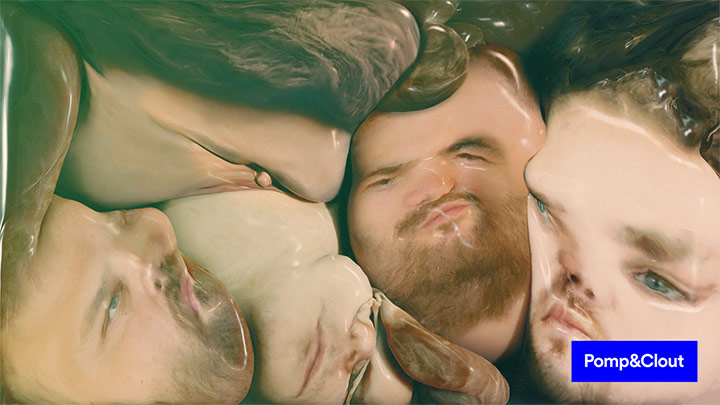
Horsing Around: Turning Ideas into Reality at Pomp&Clout
Pomp&Clout is a studio that needs no introduction, because you’ve probably already seen their work, whether you...
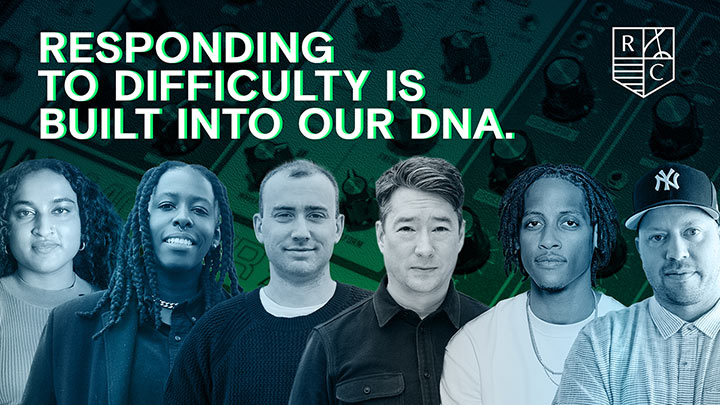
Courting A Big Sound with Racket Club
If you’ve never heard of Racket Club before, you will – just wait until Impossible Foods’ “Meat History” ge...
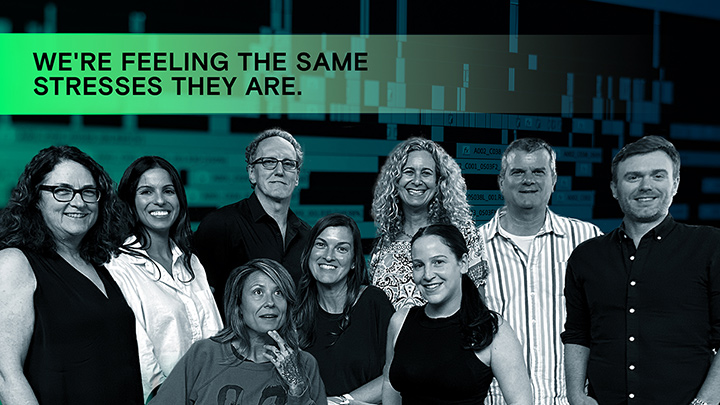
L.A. EP's Talk Post Production Pressures
Much like Simian itself, the advertising industry is constantly evolving. As such we’ve found there’s no better a...
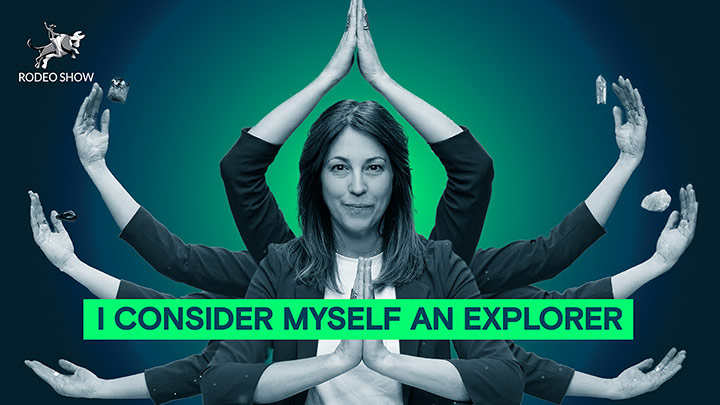
Riding Along with Rodeo Show’s Katie Walker
When Rodeo Show, the L.A.-based production company that’s a sister shop to Durable Goods, announced the hire of vet...
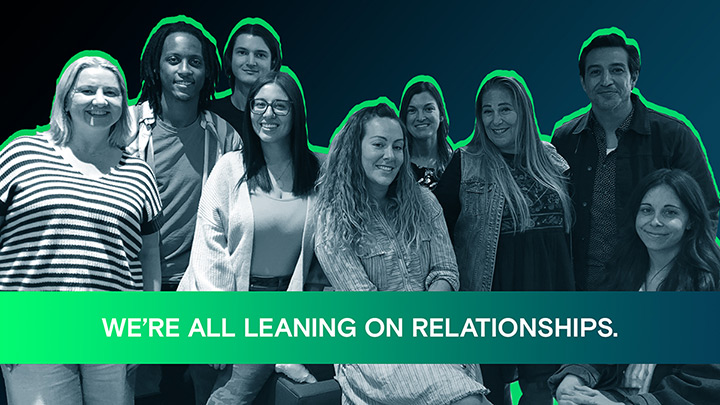
Post Production EPs Gather During AICP Week
Simian was on hand for all the events at AICP Week in New York, and we took the opportunity to invite a number of Sim...

